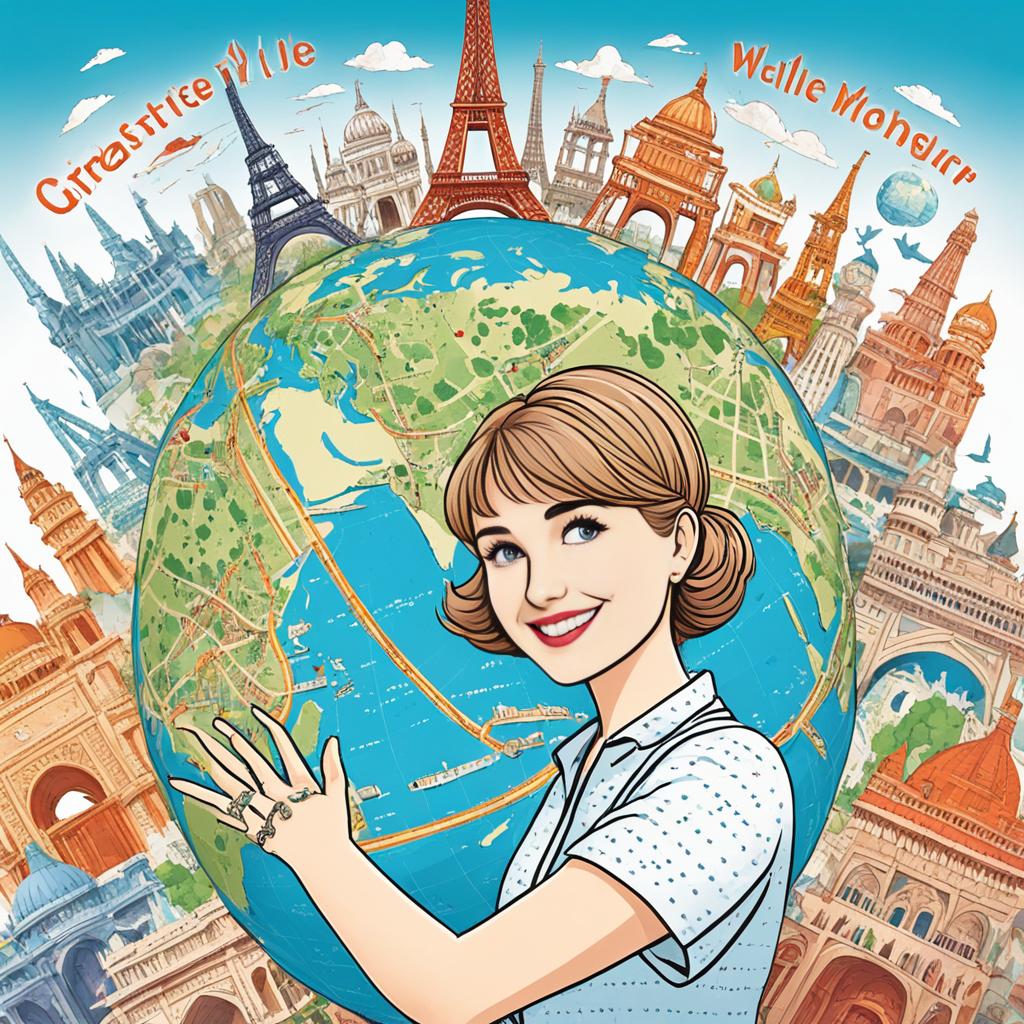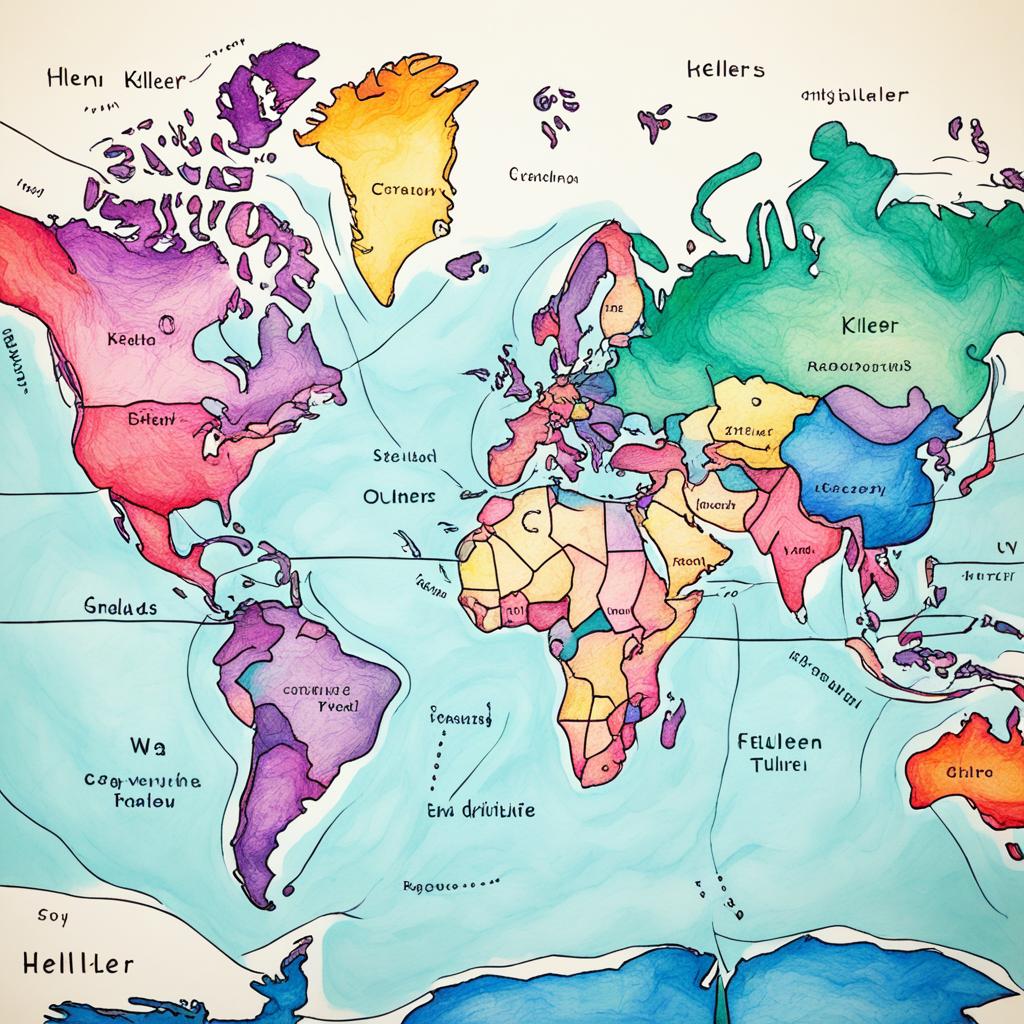Have you ever wondered about the global journey undertaken by the remarkable Helen Keller? This pioneering American author, activist, and lecturer traveled extensively throughout her life, visiting numerous countries around the world.
Join us as we delve into the countries that Helen Keller had the opportunity to explore during her extraordinary life. Discover the impact of her travels on spreading a message of hope, advocating for disability rights, and inspiring millions worldwide.
Prepare to be amazed by the sheer breadth of Keller’s global journey and the indelible mark she left on each country she visited.
Childhood and Education

Helen Keller, born in Tuscumbia, Alabama, in 1880, had a childhood filled with unique challenges and remarkable achievements. At the tender age of 19 months, Keller fell ill, resulting in the loss of both her sight and hearing. This devastating loss could have defined her life, but her parents were determined to find an education for their daughter.
Enter Anne Sullivan, a dedicated teacher who would forever change Keller’s life. Sullivan, also visually impaired, became Keller’s guide, mentor, and most cherished companion. Under Sullivan’s patient guidance, Keller discovered the world of communication through touch, learning to read braille and communicate using finger-spelling.
Keller’s education flourished under Sullivan’s tutelage. With immense dedication, Keller became an exceptional student, surpassing expectations and breaking barriers. She attended the Perkins School for the Blind, a renowned institution that provided specialized education to individuals with vision impairments. As Keller continued to blossom academically, her intellectual pursuits expanded.
Driven by her insatiable thirst for knowledge, Keller went on to study at Radcliffe College, a prestigious institution affiliated with Harvard University. Here, she made history as the first deafblind person to earn a Bachelor’s degree in the United States.
Helen Keller’s Educational Journey
| Education | Institution | Achievement |
|---|---|---|
| Early Education | Perkins School for the Blind | Learned braille and communication through touch |
| Higher Education | Radcliffe College | First deafblind person to earn a Bachelor’s degree in the United States |
Through the unwavering support of Anne Sullivan and her deep commitment to learning, Helen Keller’s childhood and education formed the foundation for her extraordinary life. Her experiences fueled her desire for knowledge, propelled her advocacy work, and set the stage for her unwavering determination to overcome adversity.
Touring the World

As an advocate for the rights of people with disabilities and a passionate public speaker, Helen Keller embarked on numerous international tours. Accompanied by Anne Sullivan, she traveled to 39 different countries, spreading her message of hope and inspiring audiences around the world.
Some of the countries Helen Keller visited during her worldwide travels include:
- Japan
- Australia
- South America
- Europe
- Africa
Keller’s global journey allowed her to raise awareness about deafblindness and advocate for the rights of individuals with disabilities. Her powerful speaking engagements not only helped educate others but also provided her with a means to support herself financially.
Introduction of the Akita Dog to America

During her visit to Japan in 1937, Helen Keller became fascinated with the Akita dog breed. She inquired about Hachiko, a famous Akita that had passed away, and expressed her desire to have an Akita of her own. Within a month, she received a dog named Kamikaze-go as a gift. When Kamikaze-go passed away due to illness, the Japanese government presented Keller with Kenzan-go, his older brother, as an official gift. Keller’s love for the Akita breed helped introduce it to America, and she wrote about her deep affection for her beloved dogs in the Akita Journal.
In the image above, you can see Helen Keller with her Akita dogs, Kamikaze-go and Kenzan-go. Her bond with these loyal companions played a significant role in popularizing the Akita dog breed in America.
Political Activities
Helen Keller was not only a champion for people with disabilities but also a passionate advocate for various political causes. She actively engaged in political activism, striving to create a more just society. Keller’s political pursuits were deeply rooted in her belief in equality, social justice, and individual empowerment.
One significant aspect of Helen Keller’s political activism was her involvement in the Socialist Party of the United States. As a member of the party, she advocated for the rights of workers and the redistribution of wealth to create a fairer society. Keller passionately supported Eugene V. Debs, the Socialist Party candidate, in multiple presidential campaigns, believing in his ability to bring about positive change for the working class.
In addition to her socialist ideals, Helen Keller was a fervent advocate for women’s suffrage. Recognizing the importance of equal rights and representation, she fought tirelessly for women’s right to vote. Keller firmly believed that political empowerment for women was fundamental to achieving gender equality and building a more inclusive society.
Beyond her dedication to socialist principles and women’s suffrage, Helen Keller also championed labor rights. She recognized the exploitation and inequality faced by workers and actively campaigned for fair and just working conditions. Keller’s political activities were a testament to her unwavering commitment to social justice and her firm belief that political engagement and activism were potent tools for effecting positive change.
| Political Activities of Helen Keller | Key Points |
|---|---|
| Member of the Socialist Party | Advocated for workers’ rights and wealth redistribution |
| Supporter of Eugene V. Debs | Active involvement in multiple presidential campaigns |
| Advocate for women’s suffrage | Fought for equal voting rights for women |
| Champion of labor rights | Campaigned for fair and just working conditions |
Writings, Honors, and Later Life
Throughout her life, Helen Keller made significant contributions through her writings. She authored over a dozen books, using her powerful words to inspire and educate people around the world. Her most notable work, “The Story of My Life,” detailed her extraordinary journey of overcoming deafblindness and became an international sensation, translated into 50 languages.
Keller’s writings not only provided a glimpse into her personal struggles and triumphs but also served as a source of inspiration and motivation for generations to come. Through her eloquent prose, she advocated for equal rights, inclusion, and the empowerment of individuals with disabilities.
In recognition of her exceptional accomplishments, Helen Keller received numerous honors and accolades. Her unwavering dedication to promoting social justice earned her the prestigious Medal of Freedom in 1964, one of the highest civilian awards in the United States.
As she entered later life, Helen Keller’s commitment to advocating for marginalized communities remained unwavering. She continued to travel across the country, delivering speeches and championing employment opportunities for people with disabilities. Keller also actively campaigned for poverty alleviation and women’s rights, using her influence and platform to create positive change.
| Notable Works | Honors and Awards |
|---|---|
| The Story of My Life | Medal of Freedom (1964) |
| The World I Live In | Presidential Medal of Honor by the American Foundation for the Blind (1961) |
| Out of the Dark | Horatio Alger Award (1954) |
| The Song of the Stone Wall: Helen Keller at the Phillips Brooks House (With notes on Sledgeways) (1910) | The Big Ben Award (1953) |
Portrayals of Helen Keller
Helen Keller’s extraordinary life and achievements have been depicted in various forms of media, showcasing her immense impact on society. One of the most notable portrayals of Keller is in the stage and film adaptations of “The Miracle Worker.” This powerful production explores Keller’s relationship with her dedicated teacher, Anne Sullivan, as they navigate the challenges of communication and education. Through these depictions, audiences gain a deeper understanding of Keller’s indomitable spirit and unwavering determination to overcome obstacles.
Furthermore, Keller’s remarkable story resonated with influential figures of her time, including the renowned author Mark Twain. Twain, known for his keen insight into human nature, was captivated by Keller’s intellect and resilience. He praised her book, “The Story of My Life,” referring to it as “the most remarkable book since the Bible.” Keller’s ability to inspire and move others is evident in the lasting connections she formed with prominent individuals of her era.
Helen Keller and Mark Twain
In fact, the friendship between Helen Keller and Mark Twain transcended a mere admiration for each other’s work. Mark Twain was not only impressed by Keller’s achievements but was also committed to advocating for her rights. He actively supported her campaign for the American Foundation for the Blind, recognizing the significance of her mission and impact. Keller and Twain’s relationship serves as a powerful testament to the profound effect Keller had on those who encountered her story.
Film Adaptation: “The Miracle Worker”
The film adaptation of “The Miracle Worker” further immortalized Helen Keller’s life and struggles on the big screen. Released in 1962, the movie captured the essence of Keller’s journey, earning critical acclaim and numerous awards. The film brilliantly portrayed Keller’s communication breakthroughs under Anne Sullivan’s guidance and shed light on the extraordinary bond the two shared.
| Film | Director | Awards and Nominations |
|---|---|---|
| The Miracle Worker (1962) | Arthur Penn |
|
Legacy and Impact
Helen Keller’s remarkable legacy continues to resonate long after her time. As a prominent figure in the disability rights movement, she has become an enduring source of inspiration for countless individuals worldwide. Keller’s unwavering determination and groundbreaking achievements have left an indelible mark on the advancement of education and opportunities for people with disabilities.
Through her tireless advocacy work and powerful writings, Helen Keller has empowered individuals to overcome obstacles and embrace a more inclusive and compassionate society. Her message of hope and resilience resonates deeply, reminding us that our circumstances do not define our potential. Keller’s legacy serves as a reminder that disabilities should never be viewed as limitations, but rather as opportunities for growth and transformation.
Moreover, Helen Keller’s impact extends beyond disability rights. With her involvement in various political causes, Keller fought for social justice, workers’ rights, and women’s suffrage. She fearlessly used her platform to champion equality and challenge the norms of her time. By doing so, she inspired others to raise their voices and advocate for positive change.
Helen Keller’s enduring legacy can be seen in the progress that has been made in the field of disability rights. Her groundbreaking work laid the foundation for advancements in accessibility, education, and employment opportunities for individuals with disabilities. Today, her influence continues to drive organizations and communities to create a more inclusive and equitable world for all.


